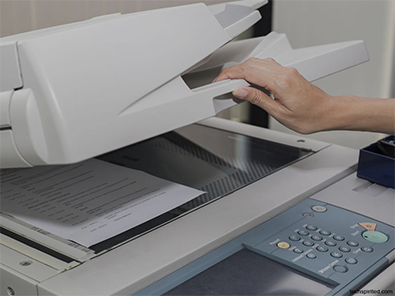Five Years Later: The Stock Market Has Recovered, So What’s Wrong With Printers?
Heading into October 2013, those of us with an eye on stock market news have heard (and will hear) many references to five-year anniversaries referring to various milestones that took place during the financial meltdown of 2008. For the most part, these are very painful memories to relive. While the economic recovery since seems anemic in many sectors, overall the world is in a much healthier fiscal place. And the stock market? It’s performed quite nicely, thank you very much.
But what about the printing and imaging industry? As regular readers know, I often use HP as a proxy for the entire sector for what I consider several defendable reasons. First, the company dominates the business like no other – as in, no other company dominates printing and imaging, let alone so many sectors of a complex technology industry, like HP. Second, I was employed by HP in the printing business until 2005 and have stayed on as an “HP Watcher” ever since, so I am more comfortable analyzing its activities than I am with any other company in this industry.
So let’s take a peek at HP’s five-year financials, which I’ve presented in a publicly available spreadsheet on my blog (see: http://jimlyonsobservations.blogspot.com/2013/08/hp-printing-results-lots-of-black-ink.html) through links in my quarterly updates. (And since HP’s fiscal year closes at the end of October, I will compare the annualized totals by taking the four fiscal quarters preceding the conclusion of the third quarter of fiscal 2008 and comparing them to the same period preceding the end of the third quarter of fiscal 2013.)
Overall, HP imaging and printing revenue back in 2008 was nearly $30 billion annually, and during its most recent four quarters, the company reported sales just under $24 billion. The 2008 data shows steady quarterly gains in the high single-digit percentages for the several years leading up to and through that tumultuous year. And that 20 percent reduction over the five years since is the result of a steady decline; 14 out of 20 quarter-to-quarter comparisons have been on the downside. (Interestingly, the six positive revenue comparisons occurred in sequence from Q1 FY10 to Q3 FY11.)
The supplies component of revenue, always the largest and most profitable, had an overall decline from about $4.5 billion to about $3.8 billion – just a 12 percent decline, which speaks to the relatively gentler 14 percent decline in operating profits compared to that of total revenue (down 20 percent). The printer categories (commercial and consumer) suffered steeper drop-offs (14 percent and 42 percent, respectively), which is to be expected in a market with declining usage, in the sense that supplies are an “inferior” good in a “microeconomic elasticity” sense and are purchased in lieu of new hardware.
Buying new toner and ink for old printers could be seen as the equivalent of households spending money on auto repairs during difficult times, keeping the old beater on the road a little longer rather than visiting their local dealership. Transportation is required, but now is not the time to buy a new car. A better solution requires more capital outlay and, hoping for better times ahead, delaying the purchase makes sense. In the printer example, getting more out of fewer or older printer fleets could be the result of active managed print services in the case of enterprises and, more recently, small and midsize businesses. And in the case of home users, just plain printing less still justifies the occasional ink or toner purchase, but not a new printer – now or ever.
As it turns out, HP was holding one of its “Industry Influencer” summits early in October 2008, which I attended and blogged about. My memory of those days is one of major mixed emotions as we gathered as HP’s guests in the luxurious Grand Del Mar resort in San Diego, just a few miles from the company’s Imaging and Printing Group headquarters. And as we were being wined and dined and impressed with HP’s broad array of products and solutions, we were also aware of a Dow Jones Industrial Average’s free fall – tumbling by 500 points a day every day for a while. It made for an enduring recollection, that’s for sure.
My two blog posts live from the event make for some interesting reading five years later. My first (“Live from San Diego”) recaps the conference’s opening comments, given by Vyomesh Joshi (VJ), HP’s printer chief then (and what seemed like would be forever). The post summarizes the aforementioned stellar financial results and also features links to HP press releases covering its myriad new products and solutions. The second blog post is much more product-focused (“HP Is Wild about Wireless”), documenting HP’s push to include wireless connections across its PhotoSmart line of printers.
Of course, the first one brings to mind the departure of Vyomesh Joshi, who outlasted his boss at the time, CEO Mark Hurd, and another CEO as well, Léo Apotheker. But after tumultuous times that included the absorption of IPG into the PC business, Joshi retired in 2012, shortly after Meg Whitman took the reins as CEO. And the second post about wireless printers highlights the difficulty of product differentiation. Acknowledging that it was a bit behind, I was impressed by HP’s push to add Wi-Fi to many of its printers, knowing that HP could “do it right.” Today, however (and for some time now, really), a printer’s Wi-Fi capability is more of a hygiene factor – something to take note of, perhaps, but hardly a deal-maker, and perhaps more conspicuous by its absence.
For further perspective beyond my blog posts, memories and financial reports, I consulted the November 2008 edition of The Hard Copy Observer, at that time still in its original black-and-white, printed and bound format. It boasted 88 pages packed with industry news and views, including articles like “Better Late Than Never: Memjet Prepares for 2009 Product Launch” and “Kodak Vows to Stay the Course in Economic Hurricane.” Its feature article, going nearly 6,000 words, covers the HP event as well and is titled “HP Repeats Print 2.0 Message, But Admits ‘Times Are Tough’ at Analysts’ Briefing.” The article goes on to state that “HP executives focus on top-line strategies and vertical-market solutions, relegating new hardware introductions to a supporting role.” (The story was not bylined, and I was not a contributor.)
The value of the perspective from that piece is immense, in part because it makes us mindful that the financial woes experienced in the fall of 2008 were preceded by multiple stages of bad and threatening news. It also points out the contrast between the conference venue’s “over-the-top opulence” and the tone of many of the executive presentations – to say nothing of the frightening downdraft that was taking place in the world’s stock markets during the event. It’s also a good reminder of the “Print 2.0” initiative driving the business back then, which has since been shown the door.
Overall, while the stock market indices have come back to overtake their 2008 highs (and for the DJIA and S&P 500, all-time highs as well), the printer industry, it seems fair to say, has done no better than bounce back to 80 percent of its former self, with more declines ahead. Fall 2008 was only a little over a year into the shipping life of the first Apple iPhone and well before the first iPad came out. Social media and mobile lifestyles were just developing to their current state (case in point: HP announced a Myspace relationship at the conference). And by benchmarking an industry titan like HP, we can only wonder about the severity of declines in other camps. A version of an old saying – “When HP sneezes, the rest of the industry catches a cold” – is probably very fitting for the period between the falls of 2008 and 2013.
Jim Lyons

Posted on 10/01/2013


